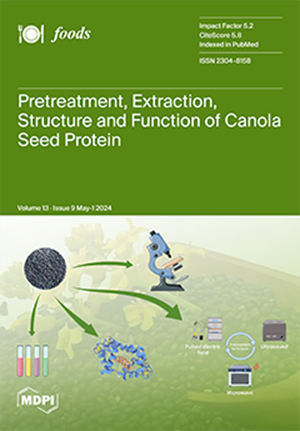Research on Non-Destructive Quality Detection of Sunflower Seeds Based on Terahertz Imaging Technology
IF 4.7
2区 农林科学
Q1 FOOD SCIENCE & TECHNOLOGY
引用次数: 0
Abstract
The variety and content of high-quality proteins in sunflower seeds are higher than those in other cereals. However, sunflower seeds can suffer from abnormalities, such as breakage and deformity, during planting and harvesting, which hinder the development of the sunflower seed industry. Traditional methods such as manual sensory and machine sorting are highly subjective and cannot detect the internal characteristics of sunflower seeds. The development of spectral imaging technology has facilitated the application of terahertz waves in the quality inspection of sunflower seeds, owing to its advantages of non-destructive penetration and fast imaging. This paper proposes a novel terahertz image classification model, MobileViT-E, which is trained and validated on a self-constructed dataset of sunflower seeds. The results show that the overall recognition accuracy of the proposed model can reach 96.30%, which is 4.85%, 3%, 7.84% and 1.86% higher than those of the ResNet-50, EfficientNeT, MobileOne and MobileViT models, respectively. At the same time, the performance indices such as the recognition accuracy, the recall and the F1-score values are also effectively improved. Therefore, the MobileViT-E model proposed in this study can improve the classification and identification of normal, damaged and deformed sunflower seeds, and provide technical support for the non-destructive detection of sunflower seed quality.基于太赫兹成像技术的葵花籽无损质量检测研究
葵花籽中优质蛋白质的种类和含量均高于其他谷物。然而,葵花籽在种植和收获过程中会出现破损和畸形等异常情况,阻碍了葵花籽产业的发展。人工感官和机器分拣等传统方法主观性强,无法检测出葵花籽的内部特征。光谱成像技术的发展促进了太赫兹波在葵花籽质量检测中的应用,因为它具有无损穿透和快速成像的优点。本文提出了一种新型太赫兹图像分类模型 MobileViT-E,并在自建的葵花籽数据集上对该模型进行了训练和验证。结果表明,所提模型的总体识别准确率可达 96.30%,比 ResNet-50、EfficientNeT、MobileOne 和 MobileViT 模型分别高出 4.85%、3%、7.84% 和 1.86%。同时,识别准确率、召回率和 F1 分数等性能指标也得到了有效提高。因此,本研究提出的 MobileViT-E 模型可以提高对正常、受损和畸形葵花籽的分类和识别能力,为葵花籽质量的无损检测提供技术支持。
本文章由计算机程序翻译,如有差异,请以英文原文为准。
求助全文
约1分钟内获得全文
求助全文
来源期刊

Foods
Immunology and Microbiology-Microbiology
CiteScore
7.40
自引率
15.40%
发文量
3516
审稿时长
15.83 days
期刊介绍:
Foods (ISSN 2304-8158) is an international, peer-reviewed scientific open access journal which provides an advanced forum for studies related to all aspects of food research. It publishes reviews, regular research papers and short communications. Our aim is to encourage scientists, researchers, and other food professionals to publish their experimental and theoretical results in as much detail as possible or share their knowledge with as much readers unlimitedly as possible. There is no restriction on the length of the papers. The full experimental details must be provided so that the results can be reproduced. There are, in addition, unique features of this journal:
manuscripts regarding research proposals and research ideas will be particularly welcomed
electronic files or software regarding the full details of the calculation and experimental procedure, if unable to be published in a normal way, can be deposited as supplementary material
we also accept manuscripts communicating to a broader audience with regard to research projects financed with public funds
 求助内容:
求助内容: 应助结果提醒方式:
应助结果提醒方式:


